Information about the possibilities and the process
Photographs, text and graphic can be screenprinted on almost all surfaces with a screen you can make yourself or I can make it for you.
Screenprint on canvas, cardboard, stones, textile, plastic, metal, glass m.m. A simple method that minimizes material use and waste. Inspiring tuition and guidance focusing on your ideas and professional solution.
You can order ready-made products or the materials to make it yourself.
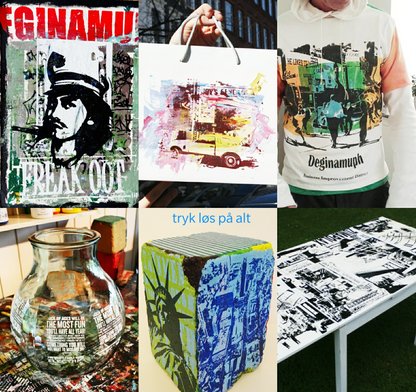
Image
Prepare the image by first removing all colours, and then create a strong black and white contrast, which eliminates the grey tones.

Screen
The screen is made of stretcher bars, polyester mesh and photo emulsion. You can make the screen yourself.
I offer a selection of screens with or without emulsion. More information.
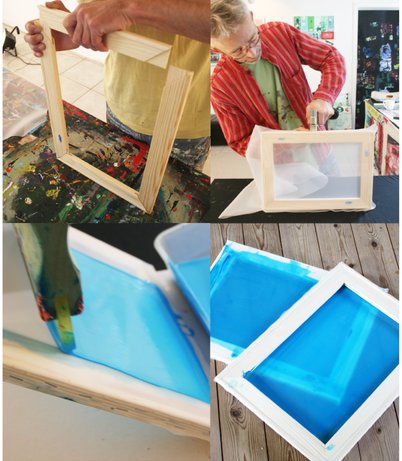
Exposure
The ultraviolet light from the halogen lamp will harden the exposed emulsion within a few minutes.
The film is placed mirrorwise on top of the screen, and a glass cover is put on top to keep the film flat and steady towards the screen. After exposure, unexposed emulsion is washed out in lukewarm water.
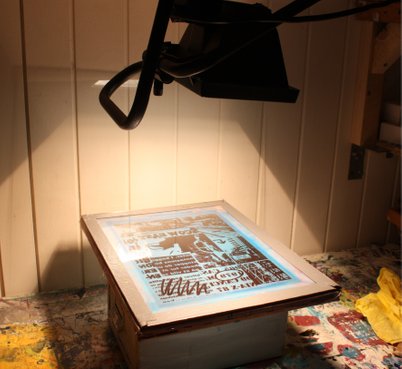
Screenprint
You can screenprint when the screen is dry. Use a squeegee or alternatively a plastic/credit card and screenprint with a waterbased medium.
A small squeegee is being used to make a narrow print, which is repeated with different colours. Three screenprints of the same image, each screenprint with a variation in colours.
To avoid paint to dry onto the screen, after screenprinting immediately clean the paint from the screen preferably in lukewarm water.
In the video is an example of a screenprint with a squeegee on paper.
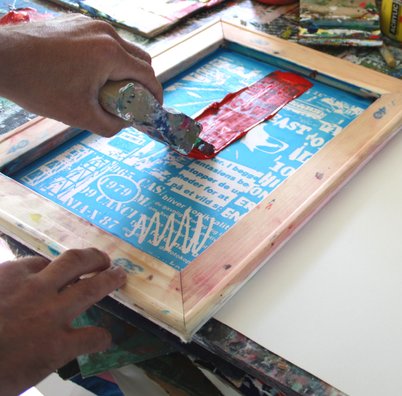
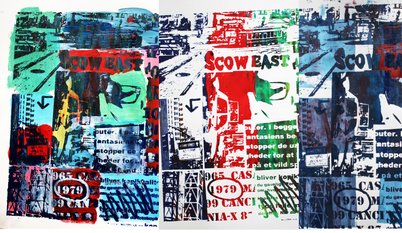
Wash screen after screenprinting
Wash both sides of the screen immediately after you have finished printing. Lukewarm water and a soft sponge.
Wash gently, making sure both sides are washed. Allow to dry and/or wipe gently with a soft tea towel. Be aware that the image on screen is most vulnerable at the beginning when washing, and hardens after 2-3 screenprints and washing.
Wash screen after exposure
If you expose your own screens.
Use a wet soft sponge and let the water wash off the emulsion without using pressure.
Carefully wash off the emulsion in circular motions. The image begins to appear clearer as you wash off the unexposed emulsion. Ensure even washing over the entire surface and especially out in the sides and corners. Turn the screen regularly and wash both sides.
When wiping, place a tea towel on top of the screen to soak and place it on a warm/sunny place. Can be used for printing when the screen is dry.
Stencil-print on an arm
Print with acrylic paint, stencil and a sponge. Put a piece of tape on the end of the stencil or hold the stencil tight.
Use a slightly wet sponge with a small amount of paint on it. Make a smooth motion across the stencil, only once is enough, make sure you get it all in. Clean the stencil in lukewarm water.
Tilmeld dig maillisten og få besked om tilbud og nye produkter her på webshoppen. Er du i forvejen tilmeldt MillerArt-maillisten får du automatisk alle de nye tilbud.
Copyright © All copyrights belong to André Maulin.
Forbehold for tekniske fejl og ændringer uden varsel.
Miller Art Shop.dk